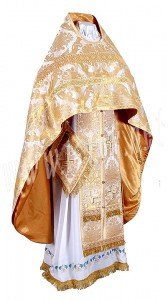Over the past several weeks I have been sharing ideas about anamnesis. Closely connected with this idea is the idea of the assembly of the Church as the image of the body of Christ. If this is true, then the image of the head of the body is the priest. He presides over, he heads the gathering and his standing at their head is precisely what makes a group of Christians the gathering of the Church in the fullness of her gifts. He symbolically represents, although he is unworthy to do so, the true head of the Church, Christ. The priest, by the laying on of hands by a bishop, manifests the power of the priesthood of Christ, who is the one priest of the New Testament. Just as the holiness of the assembly is not that of the people who constitute it but Christ’s, so the priesthood of the priest is not his but Christ’s, bestowed on the Church because she is Christ’s body. Christ is not outside the Church and neither his power nor his authority is delegated to anyone. He himself abides in the Church and, through the Holy Spirit, he fulfills her entire life. The priest is neither a representative nor a deputy of Christ: in the sacrament he is Christ himself, just as the assembly is Christ’s body. Standing at the head of the body, he manifests in himself the unity of the Church, the oneness of the unity of all her members with himself. Thus, in this unity of the celebrant and the assembled is manifested the divine-human unity of the Church – in Christ and with Christ.
 Even the vestments of the priest is linked with the assembly. The first garment the priest wears, which is an undergarment or stikharion, represents the baptismal robe that each received when initiated into the Church. It is the garment of all the baptized and in wearing it the priest manifests the oneness of the assembly, uniting all of us with himself.
Even the vestments of the priest is linked with the assembly. The first garment the priest wears, which is an undergarment or stikharion, represents the baptismal robe that each received when initiated into the Church. It is the garment of all the baptized and in wearing it the priest manifests the oneness of the assembly, uniting all of us with himself.
The epitrakhilion or stole is the image of the Savior’s taking on of our nature for its salvation and theosis, a sign of the priesthood of Christ himself. Why? Because this vestment, on which there are seven crosses, represents the power of the Mysteries or Sacraments that join us to Christ as we experience the particular mysteries of life. This vestment represents the power given to the priest to make present in a real way, using the rituals of the Church, God in the Trinity of His Persons.
